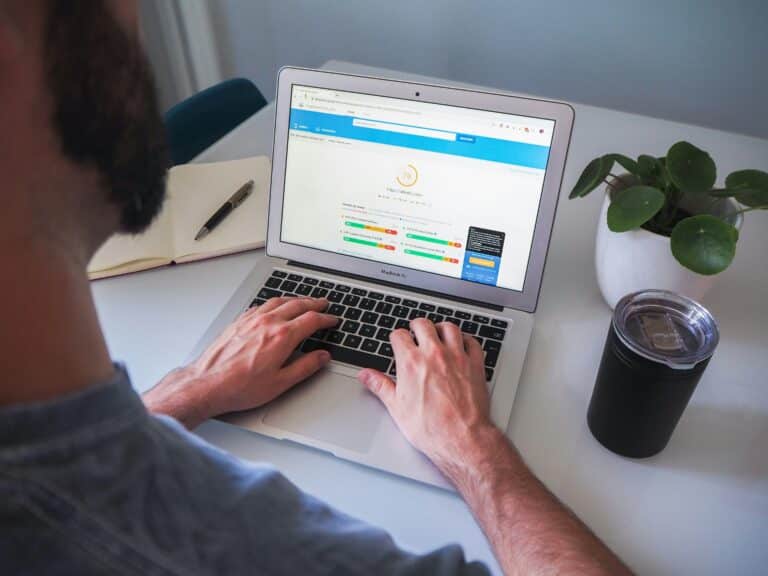A website isn’t just about looking good—it needs to work well for your users. That’s where user experience (UX) comes in. User experience design is all about how a person interacts with your website, how easily they can navigate your pages, and whether they find what they need without frustration. A well-designed UX can make the difference between a website that converts visitors into customers and one that drives them away. Let’s explore what UX is, why human-computer interaction matters, and how overall user experience impacts your website’s effectiveness.
Understanding UX: What Is User Experience?
User experience (UX) refers to the overall experience a person has when interacting with a website or digital product. This includes usability, functionality, and accessibility, ensuring that people can use your site with ease, regardless of their device or abilities.
Good UX design focuses on:
- User needs: Making sure visitors can quickly find what they’re looking for.
- Ease of navigation: Creating intuitive menus and logical site structures.
- Usability testing: Identifying and fixing issues before they frustrate users.
- Visual design & typography: Using clear, appealing layouts to enhance readability.
- Accessibility: Ensuring that people with disabilities can navigate and interact with your site.
The goal? To create a smooth, user-centered design that keeps visitors engaged and drives them toward desired actions, like making a purchase, problem-solving, signing up for a newsletter, or contacting your business.
UI vs. UX: What’s the Difference?
People often confuse user interface (UI) design with user experience (UX) design, but they are two different things that share common ground. Let’s take a look at the differences and overlaps between UX/UI:
- User Interface Design (UI) focuses on the look and feel of a website—think colors, buttons, typography, and layout. It’s what makes a site visually appealing.
- User Experience Design (UX) focuses on how users interact with the website—the customer experience of navigating, searching, and completing actions efficiently.
Imagine a beautifully designed sports car. UI is the sleek design and shiny paint job, while UX is how the car drives, handles, and responds to the driver’s needs. A website needs both for an effective digital presence.
Why UX Matters for Your Website
A website with poor UX can cause visitors to leave frustrated, resulting in high bounce rates and lost business. Here’s how good UX design can impact your website’s effectiveness:
1. Improves Usability and Navigation
A well-structured information architecture makes it easy for users to find what they need. By ideating and testing user flows, UX professionals can simplify the journey from landing on your site to completing an action.
2. Boosts Conversion Rates
By addressing pain points and optimizing key touchpoints, UX design helps guide users toward taking action. Whether it’s filling out a form or making a purchase, a good UX ensures fewer obstacles in their path.
3. Enhances User Trust and Brand Perception
People associate a seamless online experience with a trustworthy business. A site that feels effortless to use builds credibility, while a frustrating one can push potential customers away.
4. Optimizes for Mobile and Accessibility
With more users accessing sites on mobile devices, UX ensures your website is responsive, ergonomic (ensuring a comfortable, intuitive, and efficient user experience), and accessible to all users, including those with disabilities.
5. Drives Business Growth
For startups and growing businesses, focusing on UX early in the product development process can save time and money. By incorporating user research, prototypes, and iteration, businesses can avoid costly redesigns down the road.
The UX Design Process: How It Works
A successful UX design process involves several stages, often led by UX professionals working alongside product teams and stakeholders. Here’s a breakdown of how UX design works:
1. User Research & Persona Development
Understanding the end-user is key. UX research involves collecting data about user behavior and creating user personas to represent different types of visitors.
2. Wireframing & Prototyping
Before full design work begins, UX teams create wireframes (basic page layouts) and prototypes to test ideas and validate navigation structures.
3. Usability Testing & Iteration
Through usability testing, designers gather user feedback and make improvements based on real interactions. This iteration process ensures the final product is as seamless as possible.
4. UI/UX Design Implementation
Once everything is tested and refined, the UI design team steps in to finalize visual elements, ensuring a balance between aesthetics and usability.
5. Launch & Continuous Improvement
Even after a website goes live, ongoing metrics tracking and user testing help identify areas for improvement. UX is a continuous process of refining and adapting to user behavior.
Ready to Improve Your Website’s UX?
A great website is more than just graphic design or beautiful imagery—it needs to provide a seamless experience that meets user needs. If your website isn’t converting visitors into customers, it might be time for a UX overhaul.
At MAKE Digital Group, we specialize in user-centered design, helping businesses create websites that not only look great but function flawlessly. Whether you need usability testing, UI/UX enhancements, or a full website redesign, our team can help.
Let’s make your website a powerful tool for business growth! Contact us today to get started.


